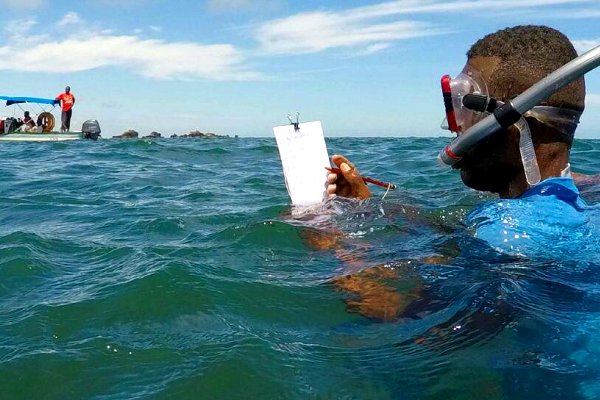
Building coastal resilience the natural way: a new guide

The US-based Nature Conservancy last week launched a major new guide to strategies for nature-based coastal resilience, including input from the IFRC secretariat and the Climate Centre.
It’s aimed particularly at humanitarian actors supporting coastal communities, as well as residents themselves, officials working with humanitarian organizations to reduce disaster risk, National Societies and NGOs.
Invoking the IFRC’s argument that “the first priority must be the long-term reduction of vulnerability and exposure,” the Blue Guide to Coastal Resilience says integrating nature-based solutions – actions that address issues like climate change and disasters through improved management of ecosystems – can help achieve both elements.
These solutions, the guide says, fall into four groups: natural solutions such as coral reefs, marshes and mangroves; managed natural solutions like artificial coral or shellfish reefs, restored beaches and dunes, and planted mangroves; hybrid solutions; and environmentally friendly engineering like bamboo-sediment fences.
“Aside from reducing climate-related disaster risk, nature-based solutions typically enhance food security, water security, social and economic development, and human health,” the guide says. “In short, they increase resilience through nature.”
‘Coastlines are also front lines’
It adds that many examples from around the world have shown that nature-based solutions “can be a powerful and cost-effective means to help communities adapt while lowering hazard-related damages and losses. “The challenge is to bring such solutions to scale, and to do so fast.”
Moushumi Chaudhury, Community Resilience Program Director at The Nature Conservancy, adds that nature-based solutions also use trees to slow run-off during storms, reduce droughts and lower temperatures, wetlands to absorb flood water, and mangroves to protect coasts from erosion, storms and floods.
Noting that in recent decades disaster risk reduction has reduced the human death toll from disasters, Chaudhury says: “The next task is to also halt and reverse the global trend of increasing livelihood losses.
“This shift requires the formation of new alliances – for instance, between humanitarian and environmental organizations. It requires learning and adoption of new techniques.”
‘Stressors’
Using the new Blue Guide, she adds, “DRR planners can help vulnerable coastal communities [shift the paradigm] to increased resilience and security for vulnerable communities along the world’s coastlines.”
The guide argues that “coastlines are also front lines”, where multiple hazards cause the greatest havoc.
On a more regular basis than, for example, the Indian Ocean tsunami, “cyclones and hurricanes kill and destroy as they reach land with maximum speed”, while in many places “subsidence, poor water-management, degradation of ecosystems and sea-level rise combine to increase vulnerability to extreme-weather events and exposure to stressors.”
The Nature Conservancy says the Blue Guide complements the IFRC’s 2016 Road map to community resilience, the WWF’s Flood Green Guide, and CARE’s Climate Vulnerability and Capacity Analysis Handbook.
It was supported by the United States Agency for International Development, and has also been endorsed by UNICEF and the Indonesian group Konservasi Alam Nusantara.
A marine conservation ranger makes notes after monitoring underwater coral reefs off Kenya’s Lamu island. (Photo: Mike Pflanz/Nature Conservancy-Blue Guide)